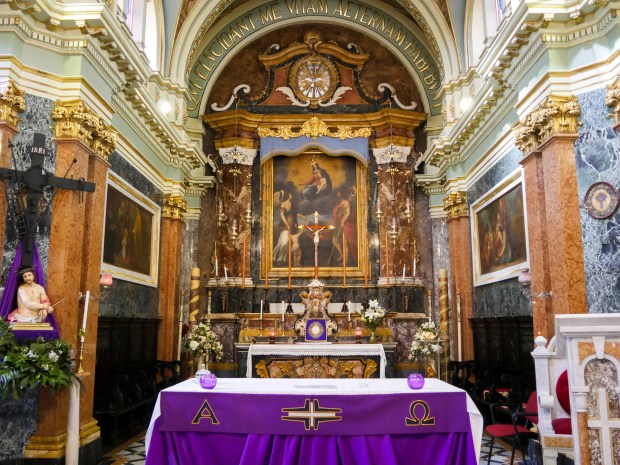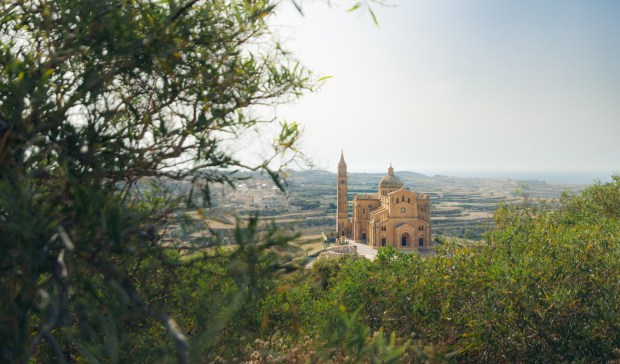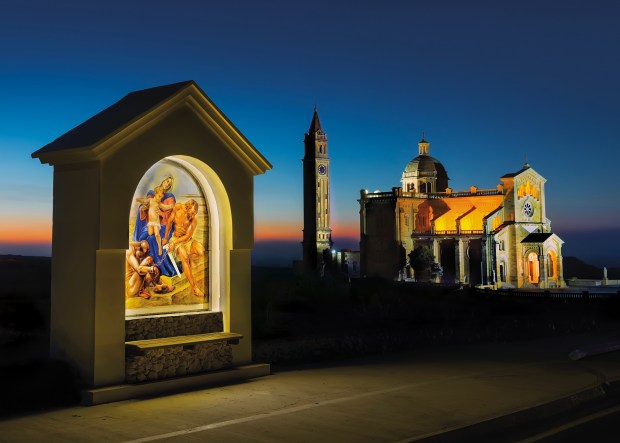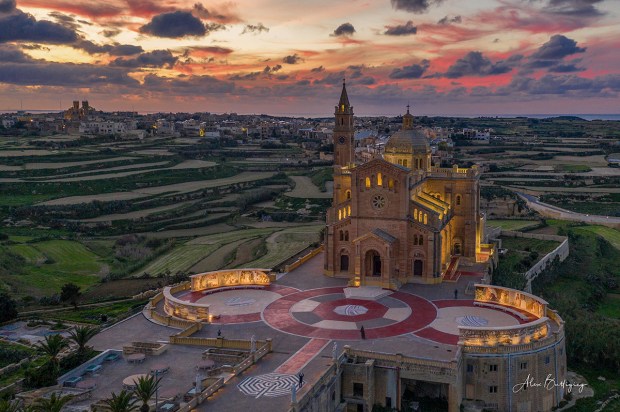Pilgrimages are physical and spiritual journeys to sacred sites associated with religious events, saints, relics, or places of worship. They provide a metaphorical and spiritual path to connection with the divine. The Book of Exodus recounts the Israelites’ journey out of slavery and into the Holy Land – a spiritual passage of liberation and covenant with God. The Psalms describe pilgrimage as a longing for communion with God and a desire to find God’s dwelling place [Psalm 84:1-2]. In the New Testament, pilgrimage takes on new dimensions with the life of Jesus Christ, including his journey to Jerusalem for the Passover and his subsequent crucifixion and resurrection.
Malta, with its rich Christian heritage, offers a unique kind of spiritual pleasure for the contemplative. Beyond its coastline, diving attractions, and festivals, the island nation ignites the soul. From ancient catacombs and pilgrimage trails to the traditions of St. Paul’s Shipwreck, Baroque cathedrals and Byzantine cave churches, Malta’s landscape invites contemplation.
With over 359 churches in its small area, the faithful can attend Mass in a different “knisja” almost every day of the year. More than 200 of these churches are dedicated to the Virgin Mary, many of them serving as Marian shrines known as places of special graces.

Malta is distinguished by its millennia-old Marian devotion, rooted in events such as the shipwreck of St. Luke with the Apostle Paul in 60 A.D. and influenced by Byzantine traditions. This deep Marian connection is evident in the many pilgrimages that cross the islands, through landscapes steeped in cultural and religious significance. These itineraries invite you to discover the spiritual tapestry of Malta and Gozo.
Camino Mariæ Melitensis AD 1432
Malta’s strategic location in the Mediterranean made it a target throughout medieval and early modern history. Despite the challenges of oppressive rule and frequent attacks, the Maltese people’s deep Catholic faith remained a source of strength and resilience. The imposing Castrum Maris (now Fort Sant’Angelo) served as a physical and spiritual beacon of hope.
Castrum Maris, later Birgu, was a thriving hub of diverse cultures. Its strategic importance led the Knights of St. John to fortify it. By 1274, the castrum even had two churches. One, dedicated to the Nativity of the Virgin Mary, may stand on the site of a Paleo-Christian church, with even older roots in a pagan temple. This layering of religious sites reflects Malta’s long spiritual history.
In 1425, the Maltese revolted against the oppressive Aragonese nobleman Gonsalvo Monroy. The rebellion spread like wildfire, forcing Monroy and his wife to seek refuge within the walls of the Castrum Maris. King Alfonso V, enraged by this defiance, sent an army to put down the rebellion. But the Maltese, united in their resolve, raised 30,000 guilders to buy their freedom from Monroy’s oppressive rule.
In 1428, King Alfonso had no choice but to recognize the indomitable spirit of the Maltese people, granting them self-government and enshrining their right to rebel in perpetuity.
Attacks continued, however. In 1429, the Hafsids besieged Malta, causing severe damage. Seeking a new beginning, the Augustinian order moved from Mellieha to Rabat after the siege. King Alfonso V countered with military campaigns and visited Malta in 1432. He honored his faith with a pilgrimage to the Sanctuary of Our Lady in Mellieha.

XirCammini, in collaboration with the Malta Tourism Authority, is reviving this ancient pilgrimage route by creating the Camino Mariæ Melitensis. The 60-kilometer (37-mile) route from Castrum Maris to Mellieha highlights Malta’s rich Marian devotion. Information to assist the pilgrim and the multi-camino credencial are available on the dedicated website or on XirCammini’s generic website. Some of the sites this pilgrimage goes through include:
The Sanctuary of Our Lady of Mellieha
The Sanctuary of Our Lady of Mellieha embodies Malta’s deep Marian devotion. Legend has it that Sts. Paul and Luke were the first pilgrims to the cave, now enshrined as the National Shrine of the Blessed Virgin. The 12th/ 13th-century Byzantine fresco of the Virgin Mary as Hodegetria (“She Who Shows the Way”) probably replaced an even older image attributed to St. Luke. Christian practice at the site may date back to the 5th century, with the Council of Ephesus further solidifying the importance of the Virgin Mary. Throughout history, the sanctuary has been a beacon of hope, offering prayers, blessings, and refuge during the Hasfid siege of 1425. This enduring devotion makes it a symbol of Maltese identity and a popular pilgrimage destination today.

Mdina: Ancient City of Faith
Founded by the Phoenicians as Maleth and renamed Melitæ by the Romans, Mdina has deep spiritual significance. Tradition has it that Mdina Cathedral stands where the Roman governor Publius met St. Paul after his shipwreck – a connection supported by Roman remains found in the crypt. While the Publius encounter may also have occurred at San Pawl Milqi, both sites near St. Paul’s Bay strengthen the island’s connection to his journey.
The site of Mdina Cathedral has been sacred for centuries and is believed to be the site of Malta’s first cathedral dedicated to the Virgin Mary. While the current baroque structure was built after the 1693 earthquake, its location atop the ancient citadel speaks to its enduring importance in the Maltese faith.
Melita Mariana: A Marian Pilgrimage Like No Other
Embark on a captivating five-day, 100+ kilometer pilgrimage across Malta and Gozo with the Melita Mariana Project. This enriching journey delves into the islands’ ancient Marian devotion, traversing landscapes steeped in centuries of religious and cultural significance. Discover the deep connections to the Marian traditions that have shaped Malta and Gozo and witness their rich spiritual tapestry. This is another collaborative project between XirCammini and the Malta Tourism Authority. It should be completed by the end of this year.
Sanctuaries, Churches and Chapels
Old Mdina Cathedral, Mdina: Founded by the Phoenicians, Mdina was the ancient capital of Malta. Its cathedral, originally [most probably] dedicated to the Virgin Mary, is associated with St. Paul’s meeting with the Roman governor Publius. Although the present baroque structure dates from the late 17th century, the site itself is sacred, with Roman remains found in the crypt.

Santa Marija Tal-Virtu, Rabat: This site, with a rotunda church dedicated to Our Lady of the Assumption, has archaeological significance. There are Phoenician and Romano-Punic tombs, including a paleo-Christian hypogeum from the 5th or 6th century (this site is privately-owned so access may be limited).

Annunciation Church, Rabat/Dingli: The Carmelites established their first Maltese house here in the early 15th century. The site includes an 11th-century church dedicated to the Annunciation and a cave church dedicated to St. Leonard with features reminiscent of paleo-Christian spaces.
Our Lady of the Grotto, Rabat: This sanctuary traces its origins to an apparition of the Virgin Mary to a hunter in 1400. The site became a major pilgrimage destination, known for numerous graces, from miraculous healings to the end of epidemics.
Church of Our Lady of Victory, Valletta: This church was built in gratitude for the victory during the Great Siege of 1565. It has beautiful, vaulted ceilings painted with scenes from the life of the Virgin Mary and houses a Byzantine icon of unknown origin.

Madonna tal-Herba, Birkirkara: This Marian shrine is famous for its 17th century title painting and over 500 votive offerings. It’s a symbol of mercy, known for miraculous healings and blessings related to safe childbirth.
Stella Maris Parish, Sliema: The oldest parish in the region, it bears the title “Star of the Sea” – a traditional name for the Virgin Mary. The art and architecture of the church tell the story of its rich history.
Sanctuary of Our Lady of Miracles, Lija: Dating back to at least the 13th century, this shrine contains a significant Marian painting. A miraculous event in 1743 cemented its reputation as a place where prayers are answered.
Cave Church of Castrum Maris, Vittoriosa: This semi-troglodyte chapel within the ancient Castrum Maris is a testament to Malta’s deep Christian roots. It probably replaced a temple dedicated to female pagan deities, reflecting a common pattern in Christianization.
The Assumption of Bir Miftuh, Gudja: This centuries-old church features remarkable murals depicting the Last Judgement and a 16th-century altarpiece.
Madonna Ta’ Pinu national Marian shrine: Its history is intertwined with miraculous events, including a divine call experienced by Karmni Grima in 1883. The shrine has been visited and recognized by several popes, testifying to its spiritual importance.

Interested in Camino Mariæ Melitensis AD 1432 or Melita Mariana?
XirCammini helps individuals or groups walk the Caminos. Contact us on information@XirCammini.org or via WhatsApp on +35679046942. We are a not-for-profit organization dedicated to historical and faith-related walks in Malta and Europe – registered as a Voluntary Organization (VO1646) with the Office of the Commissioner for Voluntary Organizations, Malta.
The Pilgrim’s Way: A Journey to the Madonna of Ta’ Pinu
In 1883, Karmni Grima of Għarb experienced a profound calling. A mysterious voice beckoned her to the chapel of Ta’ Pinu. It was Our Lady. She instructed Karmni to recite three Hail Marys in honor of the three days her body lay in the tomb.
Although she initially kept her encounter secret, Karmni eventually shared it with the devout Franġisk Portelli, who had also heard a mysterious voice. Amazingly, at about the same time, he had heard a voice asking him to say prayers in honor of Christ’s hidden shoulder wound, caused by the weight of the heavy cross along the torturous path to Calvary.
Shortly thereafter, Franġisk’s mother was miraculously healed through the intercession of the Virgin of Ta’ Pinu. Word of these divine events spread, and Ta’ Pinu became known as “The Church of Miracles,” attracting countless pilgrims seeking healing and blessings.

The Pilgrim’s Way, inaugurated in 2015, offers a meditative path leading to the Ta’ Pinu Sanctuary. Along the last kilometer, five niches house beautiful frescoes by Sergio Favotto. Pilgrims can pause at each niche to reflect on the Blessed Virgin Mary’s abiding love and guidance. At the crossroads before this last stretch is the Pilgrim’s Monument, where the Virgin Mary herself seems to show the way to her Shrine. This monument symbolizes Christ’s triumph over death, Mary’s role as the first disciple and perfect pilgrim, and our own spiritual journey toward our eternal destination. The five frescoes along the Pilgrim’s Way each represent a unique way in which the Virgin Mary offers her maternal care:
Mary, Help of Christians: Source of strength and protection.
Comfort of sinners: Offering forgiveness and reconciliation.
Strength of the Sick: Bringing healing and comfort.
Queen of the Family: Nurturing love and unity.
Queen of Peace: Leading us to harmony and understanding.
Whether you experience this pilgrimage from your own home, in a church, or are inspired to visit the Ta’ Pinu Sanctuary in person, the Pilgrim’s Way offers a profound opportunity to connect with the Blessed Virgin and her unwavering love. At the end of the pilgrimage, you will return transformed by grace, ready to serve the Lord and your fellow human beings with Mary’s gentle guidance.

For more information about the Shrine and The Pilgrim’s Way kindly visit here.



